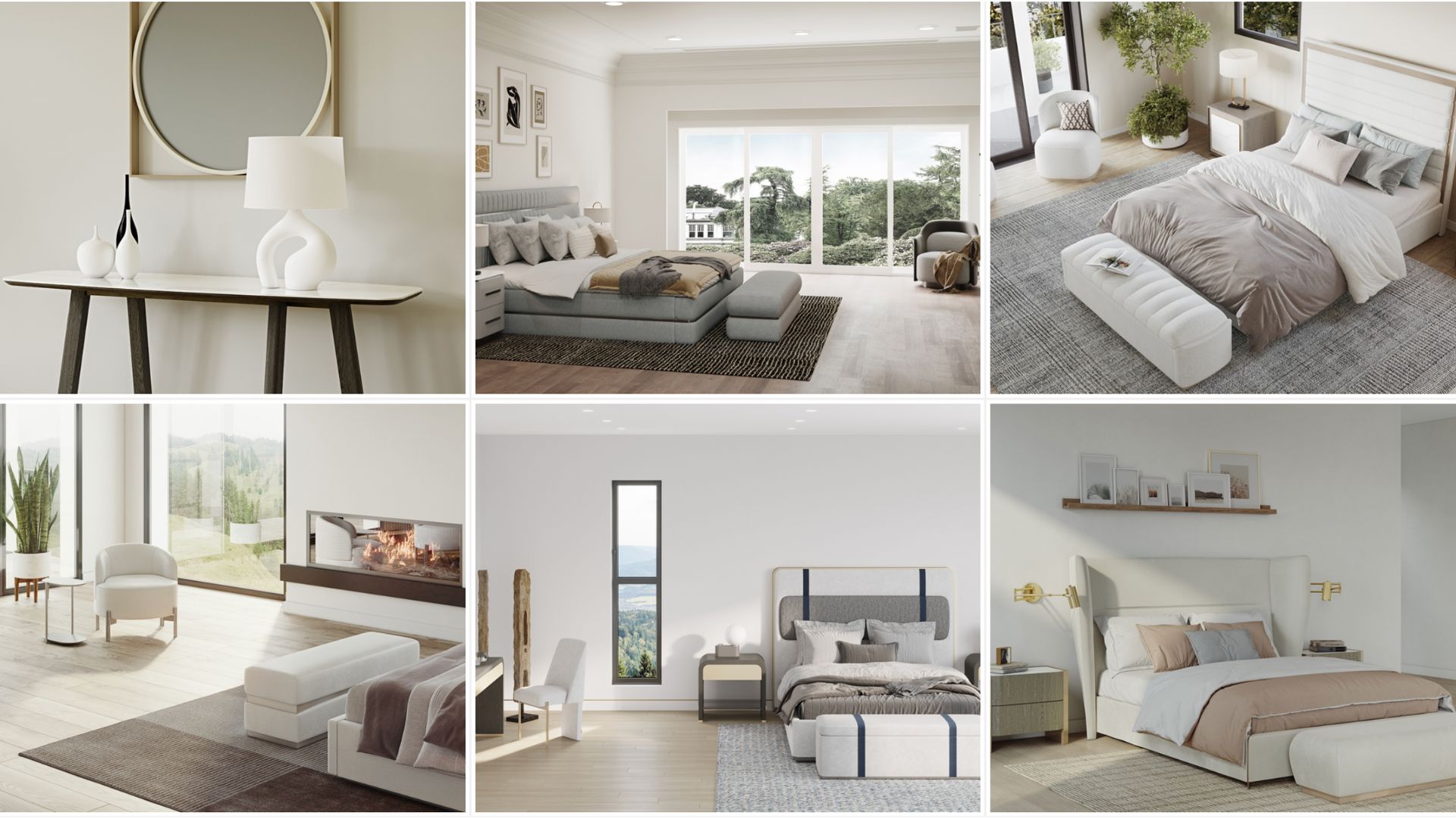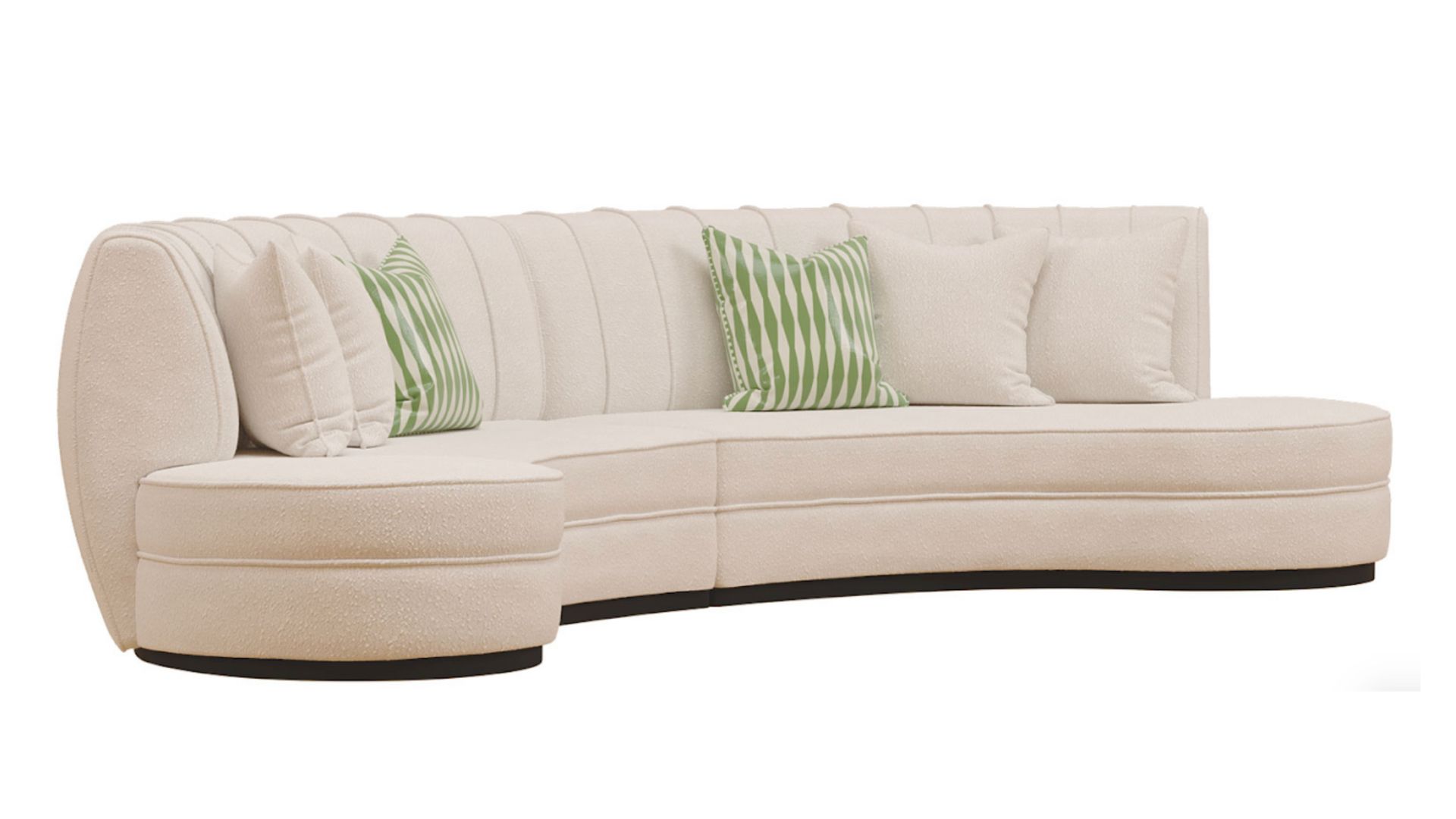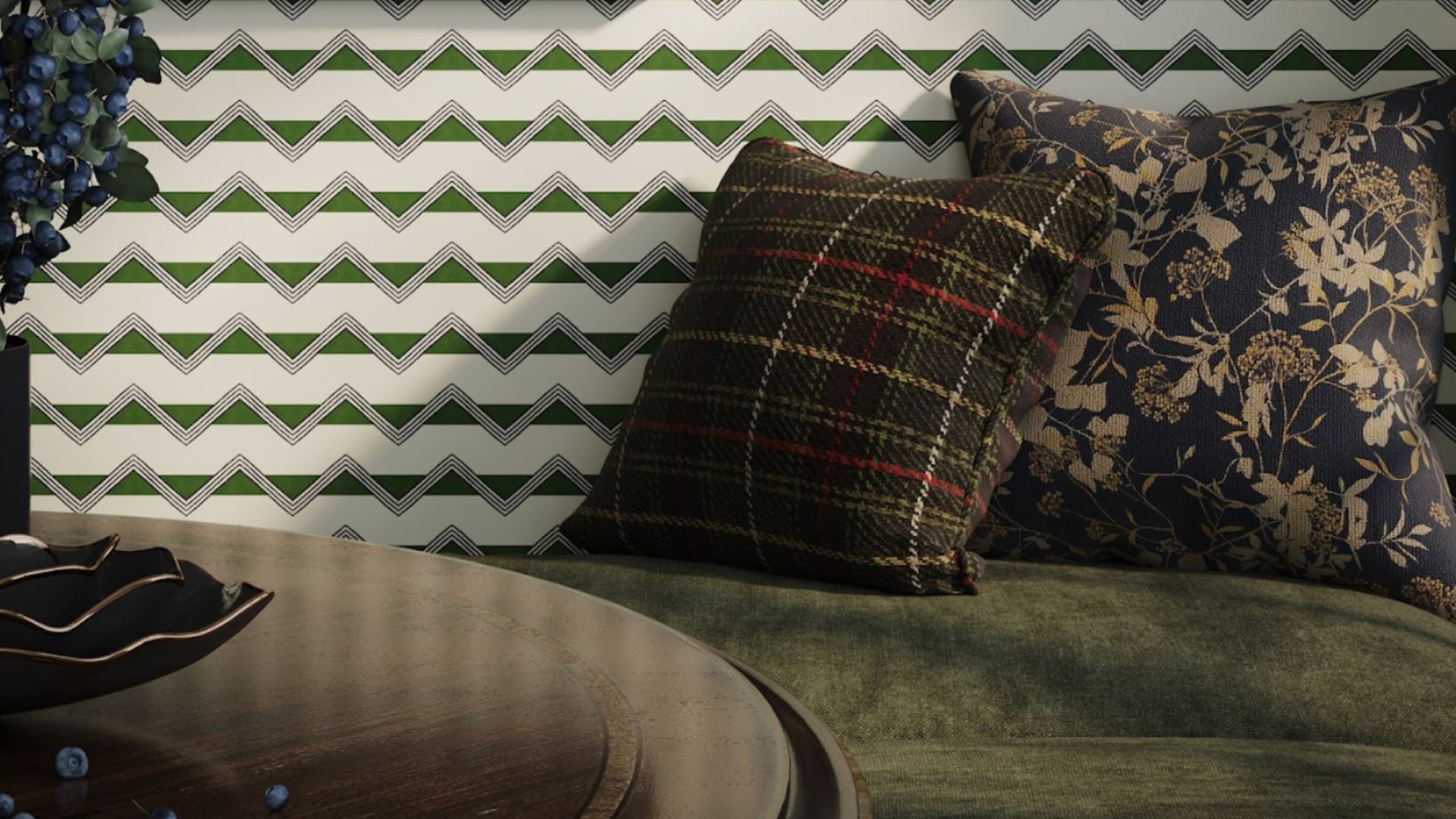In the competitive world of visual marketing, it’s no secret that visuals can make all the difference in capturing the attention of potential customers and driving sales. And at the heart of creating these visually compelling materials is the art of product modeling.
But what exactly does it mean to model a product for visual marketing materials and how to model a product? It’s about creating visuals that are not only visually appealing but also realistic and persuasive. In this article, our 3D modeling company will provide you with a step-by-step guide on how our 3D artists effectively model a product, providing you with marketing materials that truly stand out.
Let’s dive into it!
#1: Research and Understand the Product
To create a visually captivating representation of a product, it is essential to delve into thorough research and truly understand how to model a product. As a 3D modeling company, we can assist manufacturers in creating a technical specification for their product. A technical specification outlines detailed information about the product that is crucial for 3D modeling, such as the product’s dimensions, materials, and functionality. This could include product blueprints, schematics, or CAD drawings. We also review any existing marketing materials and product documentation to ensure that we have a thorough understanding of the product.
With this information, we create a detailed technical specification that will serve as guidance for 3D artists during the modeling process. This specification ensures that every detail of the product is accurately depicted in the visuals and that the final product truly represents the client’s vision.
Understanding the Product
When 3D artists receive a project to model a product for visual marketing materials, they start by studying the product and the technical specifications provided by the client. This step is crucial to ensure that the resulting 3D model accurately represents the product.
Our artists thoroughly review the technical specifications prepared by the client, which include detailed information about the product’s dimensions, materials, and functionality. By carefully examining all of that, they gain a comprehensive understanding of the product’s technical details.
Understanding the Market
The research of the market and competitors of the brand allows 3D artists to identify trends, customer preferences, and opportunities for differentiation. Market analysis can entail analyzing other brands’ product modeling techniques and strategies for insights regarding what works and what doesn’t. This not only ensures the 3D artist creates visually appealing work but also unique and compelling imagery that sets it apart from competitors.
Adding market analysis to the technical assignment is not necessary but it will give our specialists a deeper understanding of what the client is looking for. By combining the technical specification with in-depth research and expert 3D modeling, we ensure that our visuals convey the product’s unique selling points and captivate potential customers.
#2. Gather Reference Material
In the quest on how to model a product and create visual marketing materials that truly captivate audiences, 3D artists understand the importance of gathering reference material. This step provides them with a blueprint that ensures every detail of the product is captured flawlessly.
Moodboards: Setting the Tone
Moodboards help establish the desired atmosphere and visual language for your marketing materials. These curated collections of images, textures, colors, and visual elements provide inspiration and serve as a reference point for creating the right mood and ambiance. By carefully selecting images that align with your brand’s aesthetics and product vision, 3D modelers can effectively convey the desired emotional response to your target audience.
Color Schemes and Palettes: Communicating Concepts Through Visuals
Color is a powerful tool in visual communication. 3D artists study color theory and explore reference material that showcases different color schemes and palettes to effectively convey emotions and messages to the audience. Whether they want to evoke a sense of calm, excitement, or sophistication, a well-chosen color scheme can significantly impact the overall impression of the marketing materials. They collect reference material that reflects the desired color scheme and palette and use it as a guide when creating the visuals.
By using moodboards and gathering reference material that focuses on creating moodboards, color schemes, palettes, and concepts, 3D artists are able to create marketing materials that truly bring the product to life with unparalleled clarity, allure, and creativity. These visuals effectively capture the essence of the product, inspire trust, and entice potential customers.
#3. Choose the 3D Modeling Software
When 3D artists model a product for visual marketing materials, they carefully select the right 3D modeling software to unleash their creativity and deliver exceptional results. With a multitude of options available, they consider several factors to ensure they meet the specific needs of product manufacturers. Here’s an explanation of how to model a product by choosing the ideal 3D modeling software.
Assessing the Client’s Needs and Skill Level
Before diving into the vast selection of software, our artists take the time to assess the client’s needs and skill level. They consider factors such as the complexity of the project, desired features, and the client’s expertise in 3D modeling. This evaluation helps them identify the software that best aligns with the client’s objectives and capabilities, ensuring a smooth and efficient modeling process.
Exploring Established 3D Modeling Software
Our artists are well-versed in the giants of 3D modeling software, such as Blender, Autodesk 3ds Max, and SketchUp. They explore these industry leaders, understanding their unique strengths, quirks, and functionalities. By familiarizing themselves with the interfaces and testing the workflows, our artists can choose the software that best suits the project’s requirements and allows them to showcase the product in its full glory.
Equipped with the right knowledge and inspiration from the 3D modeling community, our artists make informed decisions about which software to use. By selecting the ideal software, they unlock their artistic potential and create stunning 3D models that effectively showcase the product for our valuable customers, the product manufacturers. With the perfect software at their disposal, our artists can push the boundaries of creativity and bring their clients’ visions to life.
#4. Start with Basic Shapes
The process of creating 3D models for product manufacturers and marketers begins with the foundation of basic shapes, transforming pixels into captivating three-dimensional representations. The 3D artists embark on a journey of imagination, where simplicity leads to boundless creativity and the path to sculpting brilliance.
Embracing Simplicity to Unleash Creativity
The 3D artists understand that simplicity is the key to unlocking their creative potential. They start by shaping primitive forms like cubes, spheres, or cylinders to lay the groundwork for the product model. These foundational shapes provide a solid base on how to model a product. By starting with these basic shapes, the artists can focus on the core elements of the design and allow their creativity to flourish.
Shape and Proportion: The Dance of Aesthetics
During the process of refining the basic shapes, the 3D artists pay careful attention to shape and proportion. They ensure that every angle, curve, and contour harmonizes to create a visually appealing model. With their artistic intuition as their guide, they breathe life into the model, ensuring that it captivates the eyes and elicits emotions from those who view it.
By incorporating the principles of simplicity, refinement, shape, and proportion, 3D artists produce remarkable models that meet the specific requirements and goals of their customers, the product manufacturers and marketers. These models become powerful visual marketing materials that showcase the product’s design in all its glory and effectively communicate its features and appeal to the target audience.
#5. Pay Attention to Detail
In the world of 3D modeling for product manufacturers and marketers, achieving perfection is not just a destination, but a continuous journey of refinement. Every intricate detail and subtle nuance holds the power to enhance the quality of the final product and elevate it to a new level of realism.
Material Samples: Tactile Insights
Materials and textures are essential on how to model a product that delivers a touchable reality. Factors such as color, reflectivity, transparency, and roughness are taken into consideration. Each material choice aligns with the branding and design of the product, enhancing its overall appeal and authenticity.By physically interacting with these samples, they gain invaluable insights that help them achieve authenticity in their visual representation. Through touch, examination, and analysis, our artists ensure that their modeling captures the essence of the product’s elegance, sophistication, or ruggedness, setting it apart from others in the market.
The Importance of Accurate Representation
Successful product modeling lies in the ability to showcase the smallest details with utmost accuracy. 3D modelers meticulously represent these details in alignment with the original product, recognizing that the realism and overall aesthetic of the model depend on this precision. By paying careful attention to accuracy, they are able to create a faithful representation that resonates with the intended audience.
Through their expertise and attention to detail, 3D modelers cater to the specific needs and expectations of their customers, the product manufacturers and marketers. By delivering highly realistic and accurate representations of their products, these modelers create powerful visual assets that effectively communicate the product’s features and appeal to the intended target audience.
#6. Refine the Geometry
In the realm of 3D modeling for product manufacturers and marketers, the skillful refinement of geometry is crucial in creating visually captivating and realistic representations of products. One of the key aspects on how to model a product is to remain accurate in replicating the original product’s curves, edges, and surface finishes. 3D modelers expertly manipulate the geometry of their creations to breathe life into their designs, crafting mesmerizing curves and contours that leave viewers spellbound.
Creating Realistic Curves
The mastery of 3D modelers lies not only in their creativity but also in their ability to achieve smooth and seamless curves. Utilizing various tools and techniques, they meticulously shape the geometry to evoke a sense of elegance and harmony. By carefully tapering or broadening curves, they create a dance of light and shadow that mesmerizes the eye and enhances the realism of the model.
Honoring the Original Design
Accuracy is paramount in product modeling, and 3D modelers understand the importance of paying homage to the original product’s specific curves, edges, and surface finishes. They immerse themselves in the intricacies of the subject, replicating every subtle contour with precision. This dedication to capturing the authentic details ensures that the model accurately portrays the spirit and essence of the real-life product.
By refining the geometry of their models, 3D modelers infuse them with the power of realism. Each subtle detail and meticulously smoothed surface work together to create an experience that blurs the boundaries between the virtual and the physical.
#7. Apply Materials and Textures
In terms of how to model a product, applying materials and textures is a crucial step in creating visually captivating and realistic representations of products for customers, including product manufacturers and marketers. This process allows 3D artists to transform a digital model into a visually immersive masterpiece that evokes emotions and leaves a lasting impression.
Adding Depth
Textures play a vital role in bringing the 3D model to life. They add depth, character, and a sense of tactile realism to the product. Whether it’s the smoothness of polished metal or the grain of natural wood, textures help convey the essence of the product’s surface. Using UV mapping techniques, the 3D artist accurately applies textures to ensure they align perfectly with the model’s form and proportions. These detailed strokes and pixels contribute to the model’s realism, captivating the viewer’s imagination.
Embodying the Brand
Materials and textures are not just decorative elements; they serve as a bridge between the 3D model and the real-world brand it represents. The 3D artist pays homage to the brand’s identity by carefully selecting materials and textures that embody its essence. Whether it’s capturing the luxurious sheen of a high-end fashion accessory or the gritty texture of an industrial tool, the materials and textures chosen strengthen the model’s impact and connection to the brand.
The 3D artists have the ability to unlock the true potential of a model through the application of materials and textures. By selecting the right materials, adding depth with textures, and embodying the essence of the brand, they create 3D representations of products that effectively communicate their appearance and impact on customers.
#8. Optimize the Model
By optimizing your model, you can unleash its full potential, ensuring seamless performance and breathtaking visual quality. Let our 3D artist embark on a journey on how to model a product and how to optimize every byte of data and every polygon, ensuring it is scrutinized, analyzed, and refined to perfection.
Tailoring for Purpose
Customizing the optimization strategy of the model is essential and should be guided by its intended application. Whether the purpose is real-time applications, virtual reality experiences, or high-fidelity product renders, 3D artists must understand the technical requirements and limitations of the chosen platform or software. This ensures that the model’s optimization is aligned with the desired results, delivering breathtaking visuals within the specified constraints.
Simplify without Sacrificing Quality
For 3D artists, optimization is a continuous pursuit of perfection. They fine-tune every vertex and polygon to create a model that is streamlined, tailored, and simplified with purpose. The focus is on efficiency, while still retaining the essence of the design. By achieving the fine balance between performance and quality, they allow their creation to transcend from ordinary to extraordinary.
By optimizing 3D models, 3D artists provide product manufacturers and marketers with exceptional visual representations that perform flawlessly. They apply their expertise to streamline, tailor, and simplify the models, ensuring efficiency while retaining the core design elements. Optimization becomes the catalyst that elevates the creation, allowing it to excel in its intended application and leave a lasting impact.
#9. Test and Iterate The Result
During the creation of 3D models for product marketing, 3D modelers need to subject their models to rigorous testing and iterative refinement. This process elevates the model’s quality and ensures that it surpasses expectations, delivering captivating visuals.
Testing in Different Lighting Conditions
To achieve realism, 3D artists test their models under various lighting conditions, observing how light interacts with different surfaces, materials, and textures. They focus on the interplay of light and shadow, ensuring that the model looks stunning from every angle. The purpose is to find the perfect balance that enhances the form while revealing intricate details and evoking emotions in the viewer.
Viewing from Different Angles
To achieve a masterpiece that captivates the senses, the model must be admired from multiple perspectives. 3D artists view their models from different angles, analyzing each curve, each line, and each contour to uncover any inconsistencies, imperfections, or disproportions. They seek out the flaws that lie hidden and iterate until every viewpoint tells a story of perfection.
Testing and iteration are critical in delivering quality 3D models to product manufacturers and marketers. By testing under different lighting conditions and exploring multiple perspectives, 3D artists elevate their creations to the realm of realism. They engage in a continuous dialogue with their creations, responding with meticulous attention to detail until the model evolves into a mesmerizing work of art that captivates the senses.
#10. Integrate 3D Models into Captivating Marketing Materials
The integration of 3D models into captivating marketing materials for product manufacturers and marketers requires 3D artists to carefully blend their creations into the visual tapestry of the brand. By infusing the models with captivating lighting, complementary backgrounds, and harmonious design elements, 3D artists can create mesmerizing visual narratives that effectively showcase the product’s features and benefits.
Selecting the Right Backgrounds and Lighting
When integrating 3D models into marketing materials, 3D artists need to select backgrounds that enhance the aesthetics of the product, aligning them with the brand’s visual language and messaging. Thoughtfully crafted lighting is essential to emphasize the product’s unique features and entice potential customers. 3D artists strike a balance between captivating backgrounds and purposeful lighting, creating a visual symphony that resonates deeply with the target audience.
Practical Integration for Effective Communication
To effectively showcase a product’s features and benefits, 3D artists seamlessly integrate the 3D model into its intended context. This may involve placing the creation within realistic environments, demonstrating functionality, or curating a visual story that engages the viewer’s imagination. By providing a glimpse of how the product fits into the lives of customers, 3D artists awaken desire and inspire action.
In marketing materials, every element must work in harmony to amplify the product’s visual impact. 3D artists consider overall design aesthetics, typography, colors, and visual hierarchy. They align these design elements with the essence of the brand, creating a cohesive and captivating visual experience. The 3D model is seamlessly fused into this visual composition, allowing it to shine as the star of the show while supporting the overall message and purpose of the marketing materials.
At CGIFurniture, we specialize in 3D modeling, rendering, and animation services to elevate your product’s visual presence. Our photorealistic 3D solutions give manufacturers and marketers the ability to showcase their offerings in stunning detail, creating immersive experiences for customers.
Experience the CGIFurniture difference today by visiting our website and exploring our comprehensive range of 3D modeling services for creating outstanding visual marketing materials!












Leave a Reply
Want to join the discussion?Feel free to contribute!